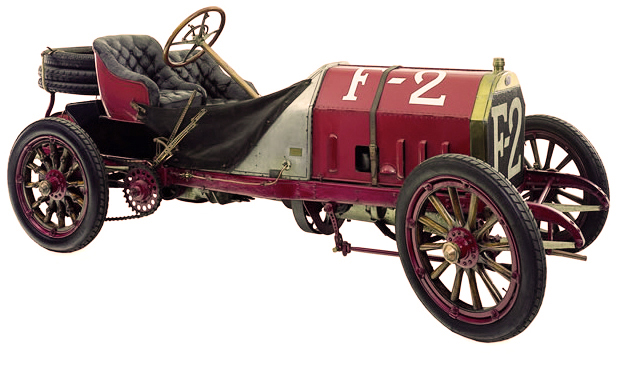Fiat 130HP F-2
Car: Fiat 130HP / Engine: 4 Cylinder in-line twin block / Maker: Fiat / Bore X Stroke: 180 mm X 160 mm / Year: 1907 / Capacity: 16,288 cc / Class: Grand Prix / Power: 130 bhp at 1,600 rpm / Wheelbase: – Track: – / Weight: 1025 kilo
Fiat’s new 5-story facility in Turin’s Lingotto district was state of the art and included a roof top test track where they could test their vehicles away from prying eyes. Fiat’s Grand Prix car for 1907 was meant to end French dominance once and for all. That year a new formula was introduced based on fuel consumption (a maximum of 30 liters per 100 km/9.42 mpg) without any weight or engine capacity limits. Fiat introduced a car designed by Giovanni Enrico and under the supervision of Carlo Cavalli which was powered by a four cylinder 16,286cc engine. The engine producing 130 bhp weighed more than 2000lbs! Each piston weighed almost ten pounds. Other features included hemi-spherical combustion chambers, centrally placed spark plugs and a Simms-Bosch magneto ignition. The driver changed gears via a multi-plate clutch and had as his disposal four speeds plus reverse through a chained transmission. To stop the car he had a foot brake on the differential gear and a hand brake on the rear wheels.
No Subscription? You’re missing out
Get immediate ad-free access to all our premium content.
Get Started



